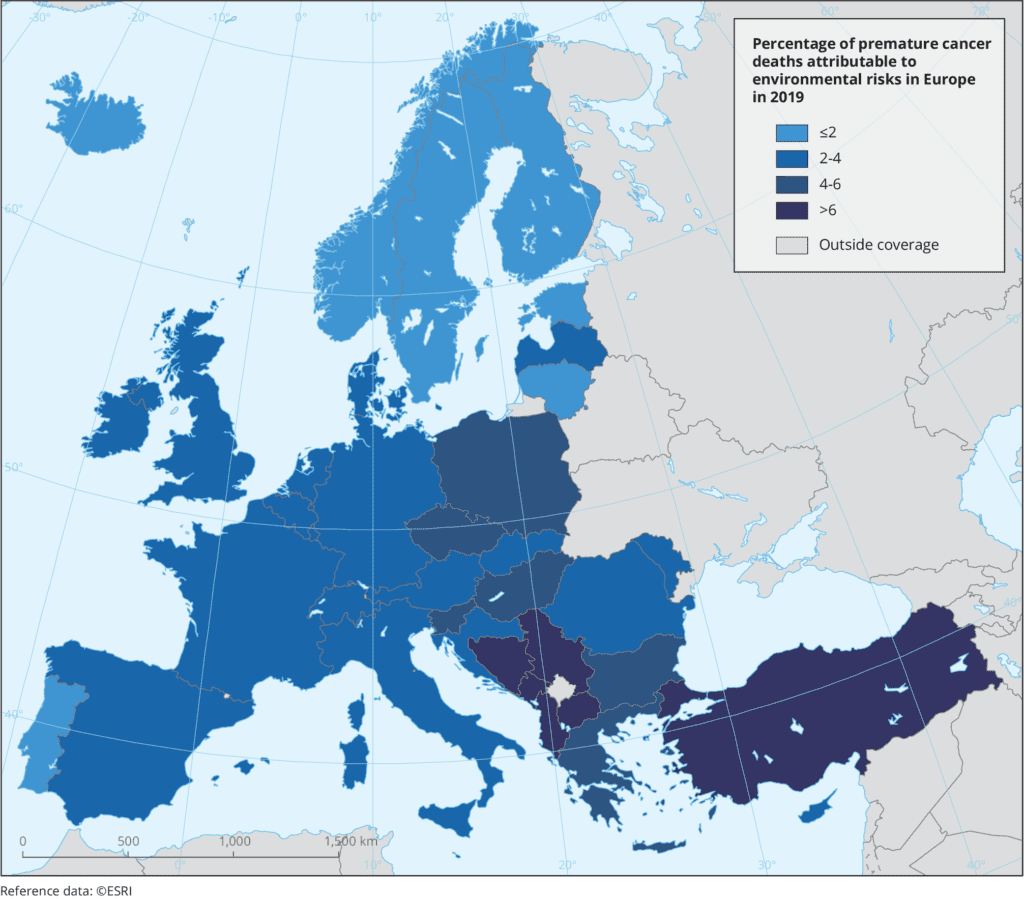
At no time in human history have humans lived so long, prosperously, and relatively peacefully. But that doesn’t mean that modern life is all rosy. Our modern lifestyles are largely made possible by burning copious amounts of fossil fuels to power our industries and gadgets. And that comes at a cost: pollution.
There are many types of pollution, each responsible for a wide array of adverse health outcomes, including an increase in the risk of respiratory infections, heart disease, and cancer. According to the World Health Organization, nine out of ten people now breathe polluted air, which kills seven million people every year.
Now, a new report from the European Environmental Agency echoes these damning statistics, concluding that 10% of all cases of cancer in Europe can be directly linked to exposure to pollutants. This means that at least 270,000 European citizens are killed by pollution every year.
Pollution can look and affect us differently, depending on its kind. The researchers who wrote the report class pollution into five major categories: air pollution, radon (an invisible, radioactive gas) and UV radiation, second-hand smoke, asbestos, and chemicals.
The researchers found that:
- 2% of all cancer deaths in Europe are linked to air pollution, which mainly refers to exposure to fine particulate matter (PM 2.5 particles) and pollutants such as nitrogen dioxide and sulfur dioxide. About 7% of all lung cancers are caused by air pollution.
- About 4% of all cancers are caused by UV radiation, which primarily causes skin cancer. Radon gas, which can seep into buildings from the ground, is of lesser concern but miners are particularly at risk of cancer due to this type of pollution.
- Exposure to chemical carcinogens is concerning, but difficult to quantify. Some of the most problematic chemical pollutants that can cause cancer include acrylamide, benzophenones, flame retardants, perfluoroalkyl, and polyfluoroalkyl substances (PFAS), as well as pesticides, benzene, formaldehyde, and silica dust.
“While we have estimates for some substances, we are not certain about the overall contribution of chemical carcinogens to the burden of cancer in Europeans,” the authors stated in their report. “Many chemicals on the market and in the environment have not undergone exhaustive carcinogenicity testing, and significant knowledge gaps remain on the potential carcinogenic effects of low levels of exposure to combinations of chemicals throughout our lifetime.”
Tackling air pollution is important not just because it directly saves lives — it also helps with climate change. Both are essentially caused by burning fossil fuels.
Meeting the Paris Agreement, meaning limiting global warming to no more than 1.5 degrees Celsius compared to pre-industrial levels, would entail shutting down absolutely all coal-fired plants by 2050, at the latest. In doing so, we’d not only help limit global warming but also clean the air and save about a million lives a year worldwide in the process. The economic benefits of tackling air pollution are significant: in the 15 countries that emit the most greenhouse gas emissions, the health impacts of air pollution are estimated to cost more than 4% of their GDP, according to the WHO.
“The true cost of climate change is felt in our hospitals and in our lungs. The health burden of polluting energy sources is now so high, that moving to cleaner and more sustainable choices for energy supply, transport and food systems effectively pays for itself,” says Dr. Maria Neira, WHO Director of Public Health, Environmental and Social Determinants of Health.
These statistics don’t seem to be lost on EU policymakers. As part of the European Green Deal — a set of policy initiatives by the European Commission with the overarching aim of making Europe climate neutral in 2050 — the EU Commission has an environmental agenda that involves addressing pollution, environmental quality, and health issues. For instance, one initiative part of this agenda is the “Farm to Fork” strategy, which aims to reduce exposure to carcinogens by incentivizing farmers towards innovation and sustainability.






